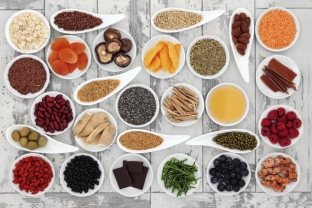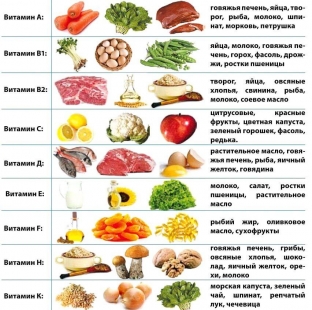In the complex therapy of infectious diseases, therapeutic nutrition is of great importance, emphasizes estet-portal.com. A properly composed diet accelerates the restoration of the patient's strength, helps to cope with intoxication of the body, and contributes to good results in the treatment of the underlying disease.
Nutrition in infectious diseases has its own characteristics, so you should pay attention to what the menu should contain during the rehabilitation period. What features does the diet contain in such diseases?
Features of metabolic disorders in the infectious process
During the infectious process, not only catabolism (decay) increases, but protein synthesis in the patient's body is also inhibited. There is a negative nitrogen balance. With a number of infectious diseases accompanied by:
- severe intoxication,
- fever,
- diarrhea
Protein loss can be up to 150-200 g/day. Protein deficiency leads to disruption of the synthesis of digestive enzymes, antibodies, a decrease in the bactericidal activity of blood serum, a decrease in thymus function up to its degeneration and atrophy, and exhaustion of the endocrine system.
Any infectious diseases are more likely to develop in people with malnutrition. The course of the infectious process in patients with deficient conditions is more severe and the prognosis is more doubtful.
Therapeutic nutrition for infectious diseases
The principles of therapeutic nutrition in infectious diseases occurring with an infectious-toxic syndrome cause controversy to this day. Some clinicians argue that increased nutrition is needed to cover the high protein consumption in an acute infectious process.
Other experts recommend reducing nutrition to a minimum, taking into account autointoxication and weakening of the functions of the digestive and excretory systems in patients. However, in the future, extensive statistical data have emerged indicating that adequate nutrition in acute infectious diseases does not increase mortality.
Basic rules for therapeutic nutrition of an infectious patient
The founder of Russian dietetics, M. I. Pevzner, developed a diet for infectious patients, and recommended that the following rules be followed when preparing a diet for an infectious patient:
- A febrile patient should not be allowed to starve. He should get enough food, but in small portions at a time.
- Any overfeeding is contraindicated, even if the patient has an appetite.
- If possible, food that mechanically strongly irritates the digestive organs should be excluded from the diet.
- It is necessary to monitor the function of the excretory organs and, in case of constipation, include in the diet products that act in a laxative way (sugar, honey, juices of raw vegetables, fruits and berries), and in case of diarrhea, exclude pure milk, cold drinks and limit the amount of sugar .
- For kidney symptoms, strong broths, extractives, spices should be excluded from the diet.
- It is necessary to take into account the state of the patient's nervous system, allowing the introduction into the diet of only a small amount of nutrients that irritate the nervous system (strong coffee, tea, very strong broth), or even completely excluding them.
M.I. Pevzner – the only author who raised the issue of the use of alcohol in acute infectious diseases. He recommended that patients who tolerate alcohol well give 30-40 ml of cognac, adding it to tea or water with sugar and lemon, Cahors, natural red or white wines mixed with water. In the absence of good natural wines, vodka or 25% alcohol can be used.
Read also: 6 diseases that a person can get from pets
Principles of Dieting for an Infectious Disease
The daily amount of proteins in infectious diseases is given approximately at the rate of 1 g / kg of body weight. In the basic standard diet it is 85-90 g, of which 50-60% are proteins of animal origin. The amount of proteins is increased in case of protein-energy deficiency.
The fat content is reduced to the lower limit of the physiological norm, since fats are difficult to digest products and can cause dyspepsia and metabolic acidosis.
The basic standard diet contains 70-80 g of fats, of which 25-30% are vegetable. Animal fats enter the patient's body as part of dairy products and butter, and butter and vegetable (up to 10 g) oils should be added to ready-made meals, and not used for frying.

The total amount of carbohydrates should correspond to the physiological norm, and it is advisable to increase the proportion of simple carbohydrates (mono- and disaccharides). Complex carbohydrates in the diet are:
- vegetables,
- fruit,
- cereals
- flour products.
Limit only products that enhance the processes of fermentation in the intestines and contain coarse fiber. Table salt is limited to 8 & ndash; 10 g / day, but with significant losses of sodium (with sweat), the amount of salt is increased to 12 & ndash; 15 g / day.
It is necessary to inject a large amount of fluid (2 & ndash; 2.5 liters) for the purpose of detoxification.
Basic vitamins and trace elements in acute infections
In acute infections, the body's need for vitamins increases significantly. Of particular value are vitamins, which in one way or another affect the state of immunity. Most rich in vitamin C:
- rosehip,
- blackcurrant,
- citrus,
- sea buckthorn.
Dietary sources of vitamin A:
- liver,
- beluga granular caviar,
- egg yolk,
- butter,
- hard cheeses.
Vitamin B2 (riboflavin) is abundant in:
- offal,
- yeast,
- almond,
- cheese,
- eggs and cottage cheese.
Vitamin B6 (pyridoxine) is found in offal, meat, beans, soybeans, rice, millet, potatoes. D improves the state of antituberculous and antifungal immunity. Food sources of vitamin D: fish and marine animal liver oil, salmon, herring, mackerel, caviar, tuna, egg, cream, sour cream.
Among microelements, the most important for the state of the immune system is zinc, the deficiency of which develops in enteritis, especially in patients who abuse alcohol. Food sources of zinc: shellfish, mushrooms, egg yolk, liver, meat. Legumes, sesame, peanuts also have a lot of zinc, but it is associated with phytic acid. Daily requirement for zinc – 15–25mg.

Stages of diet therapy for infectious disease
Against the backdrop of high fever, it is quite acceptable to drink thirst-quenching drinks for 1-2 days, you should not force the patient to eat. If fever persists for more than 5-7 days, then enteral or parenteral nutrition should be prescribed.
When the patient's condition improves after a drop in body temperature, an increase in appetite is often noted. However, one should not strive to fully satisfy it from the very beginning, since in the first 3-4 days temperature fluctuations are noted for some time, the production of enzymes of the gastrointestinal tract is disturbed. That is why during these 3-4 days you should not drastically expand the diet used.
With further expansion of the diet, the greatest attention should be paid to replenishing protein and vitamin deficiencies. The amount of protein in the diet should be 1.5 g / kg of ideal body weight, while the quota of fats and carbohydrates corresponds to the norms of rational nutrition. Reconvalescents are prescribed a food-restricted diet:
- stimulating the central nervous system (strong coffee, tea, strong broths, spices, chocolate),
- containing coarse fiber and essential oils (rutabaga, turnip, garlic, radish, radish).
Cakes, pastries, shortbread dough products are not shown. All types of cooking are allowed: boiling, stewing, baking and frying without breading. Meal mode 3 & ndash; 4 times a day.
Sometimes, convalescents may experience dyspeptic symptoms against the background of a rapid expansion of the diet. In this case, it is necessary to appoint a fasting day (boiled vegetables without salt and oil, baked apples) and check whether the diet is correct, whether the patient has concomitant chronic diseases of the digestive system, and if necessary, make appropriate adjustments, confirms estet-portal. com.






Add a comment